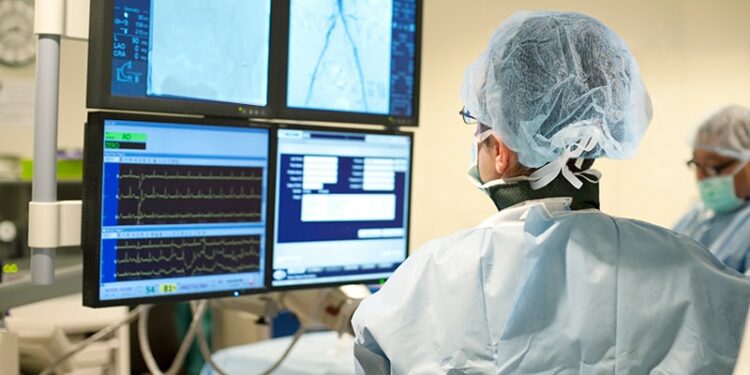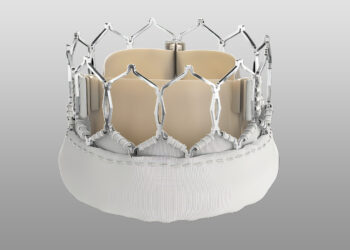[ad_1]
Details to help new and experienced clinicians perform ultrasound-guided vascular cannulation have been added to updated guidelines from the American Society of Echocardiography.
“Ultrasound guidance is currently not a standard of care for all vascular access, but it is becoming increasingly common in daily clinical practice due to its ability to enhance success rates and reduce complications,” Guidelines Cochair Annette Vegas, MD, an anesthesiologist and director of perioperative echocardiography at Toronto General Hospital, Toronto, Ontario, Canada, said in a news release.
The guidelines use descriptions, diagrams, images, and videos to explain anatomic and ultrasound imaging of vessels, vascular cannulation techniques, and ways to identify complications. Ultrasound is particularly helpful when patients have a weak pulse and small artery, or after a failed landmark attempt, the authors explained.
Increasingly, the literature shows that ultrasound-guided vascular access improves success rates and reduces complications, but the quality of the evidence remains weak, they added.
However, the availability of the equipment and the comfort clinicians feel when using it will likely be more important in driving practice than new research, said Bryan Wells, MD, guidelines cochair and a cardiologist at Emory Healthcare in Atlanta.
New Insights
The previous guidelines, published in 2011, focused on venous cannulation, whereas the updated guidelines include sections on arterial cannulation and pediatric vascular access, Wells explained.
The guidelines do not include recommendations on the sterile technique or line care after cannulation, the authors pointed out.
In general, the guidelines state, ultrasound-guided vascular cannulation techniques used in children are the same as those used in adults. However, pediatric vascular access can be a particular challenge because of small vessel size and anatomic structural variation. The updated guidelines explain, for example, that ultrasound guidance offers major advantages for arterial access over techniques that rely on anatomical landmarks, palpation, and audio Doppler.
“This is of particular benefit in neonates, infants, and small children, permitting an increase in first-attempt success rates while reducing the number of failed attempts and decreasing the rate of complications,” the authors wrote.
In 2011, venous cannulation for the jugular vein was one of the most common uses of ultrasound, Wells said. Now, arterial access is commonly used not only for hemodynamic monitoring but also for endovascular diagnostic and therapeutic procedures, such as heart catheterizations and angioplasties, he added.
In the early 2000s, clinicians relied on blind access, looking at anatomical landmarks and trying to feel the pulse and the blood vessels before inserting a needle. Ultrasound expertise was passed on through the sharing of information and by clinicians teaching each other as new equipment became available.
Although small studies were published over the subsequent 10-15 years, there was no centralized collection of best practices before these guidelines, Wells said.
The team hopes that clinicians at all levels of experience will adopt the guidelines as a standard reference for vascular cannulation and that they become a tool for training residents and fellows.
According to the guidelines, training in ultrasound-guided vascular cannulation should include three pillars of knowledge acquisition, simulation training, and supervised practice. But there are no hard data or randomized controlled trials on how best to educate trainees, so further research may clarify options.
We hope that this will “encourage more science and more studies to show where we can make progress clinically to improve outcomes and decrease complications,” Wells said.
The authors reported no relevant financial relationships.
[ad_2]
Source link : https://www.medscape.com/viewarticle/new-guidelines-ultrasound-led-vascular-access-2025a10003v5?src=rss
Author :
Publish date : 2025-02-14 07:18:18
Copyright for syndicated content belongs to the linked Source.














